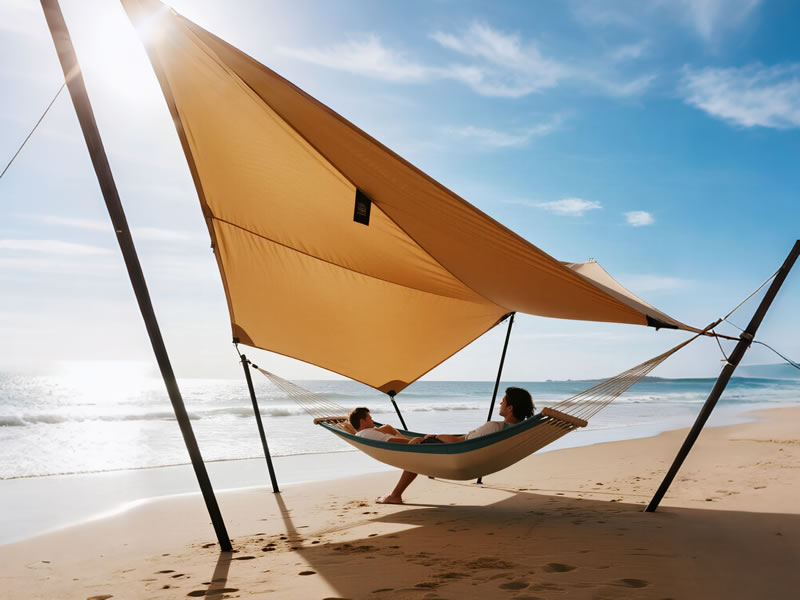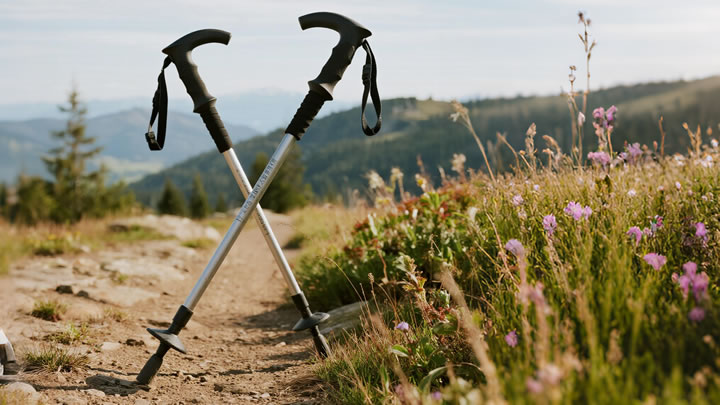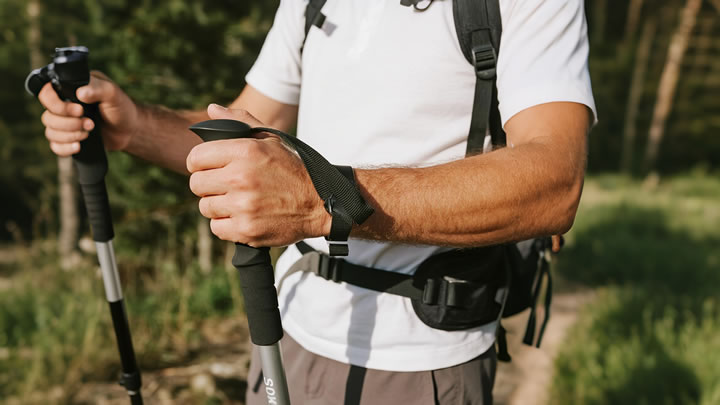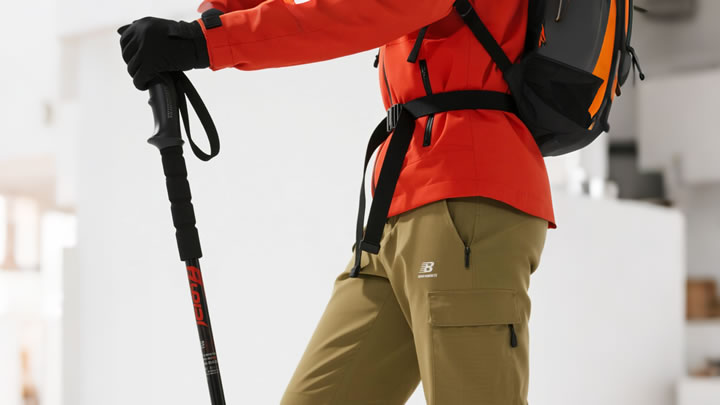Hammocks for beach camping: Saltwater-resistant materials
Beach camping blends paradise with peril: salt spray corrodes hardware, sand grinds fabric, and UV radiation degrades fibers. Standard camping hammocks fail rapidly in coastal environments. Discover how marine-engineered materials and corrosion-proof designs extend your hammock’s life while keeping you suspended safely above the surf.

Why Beaches Demand Specialized Hammocks
Saltwater accelerates material failure through:
- Galvanic Corrosion: Salt ions create electrolytic reactions, eating metal hardware.
- Hydrolysis: Salt crystals penetrate nylon fibers, weakening tensile strength by 40–60%.
- Abrasion: Sand particles act like micro-grinders on fabric.
- UV Degradation: Reflected sunlight doubles UV exposure vs. forest environments.
Saltwater-Resistant Material Hierarchy
| Material | Salt Corrosion | Sand Abrasion | UV Stability | Drying Time |
|---|---|---|---|---|
| Dyneema Composite (DCF) | Immune | Extreme | 500+ hours | <5 minutes |
| Solution-Dyed Polyester | High | High | 300+ hours | 20 minutes |
| Marine Nylon (HT-100) | Moderate | Moderate | 200 hours | 45 minutes |
| Standard Nylon | Poor | Poor | 100 hours | 60+ minutes |
Top Material Performers:
- Dyneema Composite Fabric (DCF)Used in: Klymit Drift HammockAdvantages: Zero water absorption, immune to hydrolysis, reflects UV.Trade-off: Higher cost ($200+) and stiffer hand feel.
- Solution-Dyed PolyesterUsed in: Sea to Summit Pro HammockAdvantages: Color pigments baked into fibers (no fading), resists salt crystallization.Key Metric: 50% faster drying than nylon.
Corrosion-Proof Hardware: Non-Negotiables
- Suspension:Titanium D-rings (Hennessy Explorer) – Zero rust riskDyneema Whoopie Slings – Salt-immune synthetic ropes
- Connectors:Polymer Cinch Buckles (Eno Atlas Straps) – No metal contact pointsAnodized Aluminum Carabiners – Avoid all steel variants
Sand Defense Systems
- Tight Basket WeavesSea to Summit’s 70D polyester uses 200TPI (threads per inch) to block sand ingress.
- Taped Seam ConstructionHammocks like Grand Trunk Coastal Edition seal stitch lines with PU tape to prevent "sand migration" into threads.
- Non-Mesh DesignsAvoid bug nets – sand lodges in mesh pores. Use separate clip-on nets when needed.
UV Armor Technologies
- Titanium Dioxide Coatings (Wise Owl Outfitters): Reflects 90% UV-A/UV-B
- Ceramic-Infused Yarns (Klymit Drift): Increases UV resistance to 800+ hours
- Color Science: Opt for oyster white or seafoam green – reflects 70% light vs. 10% for navy
Coastal Setup Protocol
- Pre-Rinse Hardware: Dip buckles/carabiners in freshwater before departure.
- Elevated Hang: Suspend 4+ feet above high-tide line using driftwood anchors.
- Wind Alignment: Face foot-end toward onshore breezes to minimize salt spray.
- Post-Trip Decontamination:Soak in vinegar-water solution (1:4 ratio) for 20 minutesRinse under cold freshwater showerAir-dry in shade
Top 3 Beach-Ready Hammocks
- Klymit Drift DCF HammockSalt Tech: Dyneema core with ceramic UV treatmentCapacity: 500 lbs despite ultralight 11 oz weightBeach Bonus: Drainage grommets eject sand
- Sea to Summit Pro Coastal EditionSalt Tech: Solution-dyed 70D polyester + taped seamsHardware: Titanium Vortex™ carabinersField Test: Survived 30-day Maldives test (SaltLife Magazine 2023)
- Hennessy Explorer MarineSalt Tech: HT-100 nylon with zinc-thread reinforcementInnovation: Asymmetrical design sheds wind/sand
The Science of Salt Resistance
- Osmotic Pressure: Salt crystals expand 3x when wet, splitting fibers. Polyester’s hydrophobic nature prevents absorption.
- Chloride Attack: Chloride ions form hydrochloric acid on metals. Titanium’s oxide layer neutralizes this reaction.
- UV Synergy: Salt increases UV degradation by 200%. Solution-dyed fabrics embed color at molecular level.
Avoid These Coastal Killers:
☒ Stainless steel hardware (even 316L corrodes)
☒ Double-layer hammocks (traps abrasive sand)
☒ Cotton blend fabrics (absorbs saltwater like a sponge)
Conclusion: Engineer Your Coastal Oasis
Beach hammocking requires battling chemistry (salt), physics (UV), and geology (sand). Prioritize salt-immune synthetics like DCF or solution-dyed polyester, eliminate metal hardware, and adopt strategic rinsing rituals. Remember: Your hammock’s worst enemy isn’t the waves – it’s dried salt crystals left after the trip. With marine-grade engineering, you’ll swing safely where rainforest hammocks fail in weeks.






